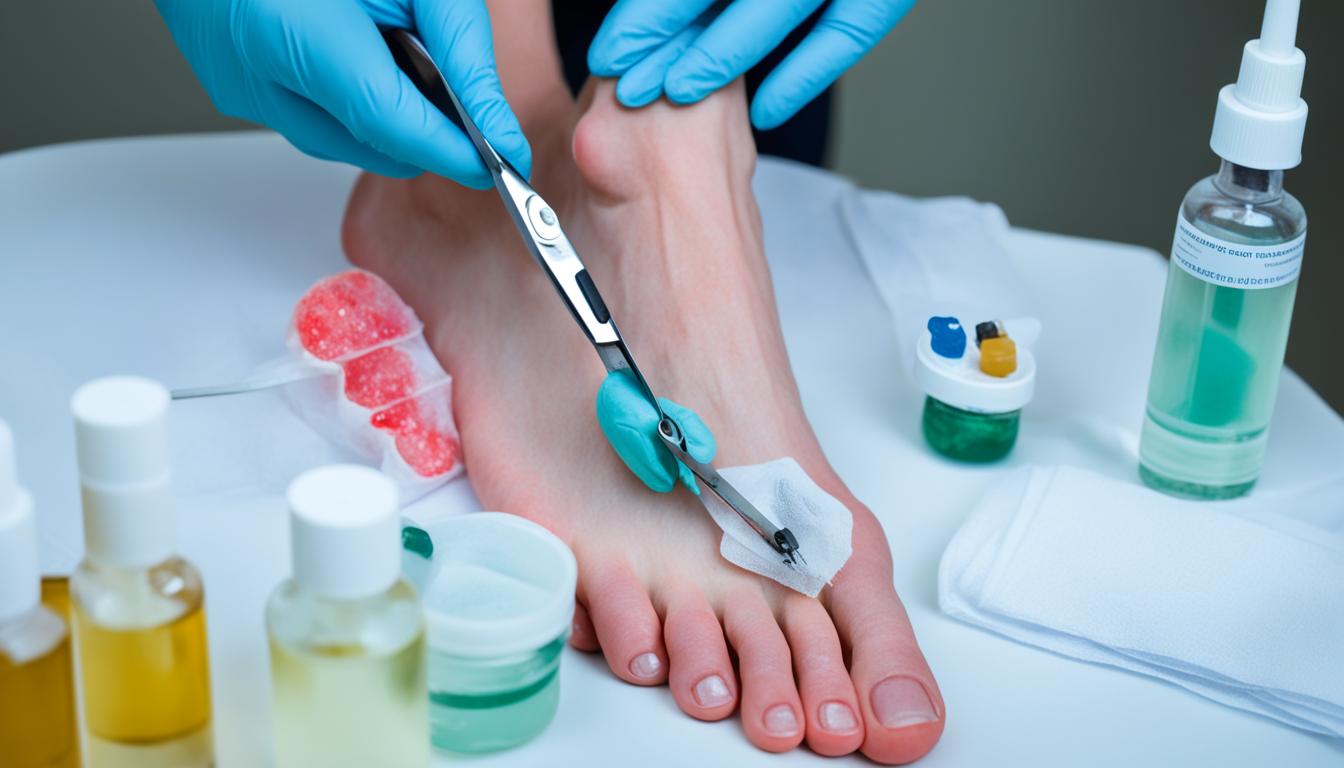Ingrown toenails are a common and often painful issue for many people. Knowing the signs, causes, how to treat them, and how to keep them from coming back is key to staying healthy.
You might have an ingrown toenail if it hurts, feels sore, or shows redness and swelling. Sometimes, it can even produce pus or leak fluid, which can mean it’s infected.
The tight fit of shoes, cutting nails incorrectly, family history, and any injury to your toe can cause ingrown toenails. To fix them, try soaking your foot in warm water, correctly trimming your toenails, taking antibiotics, or having surgery in bad cases. To avoid them, wear comfortable shoes, regularly check your feet, and keep your toenails clean. If you’re dealing with a lot of pain or signs of infection, it’s best to see a foot doctor. They can help with new treatments like stem cell therapy for ingrown toenails.
Key Takeaways:
- Ingrown toenails can cause pain, tenderness, redness, and swelling along the sides of the toenail.
- Tight-fitting shoes and improper toenail trimming are common causes of ingrown toenails.
- Treatment options include warm soaks, proper toenail trimming, antibiotics, surgical intervention, and stem cell therapy.
- Prevention strategies involve choosing comfortable footwear, regular foot inspections, and maintaining good toenail hygiene.
- Seeking professional help from a podiatrist is recommended for chronic pain or signs of infection.
Treatment Options for Ingrown Toenails
The way we treat ingrown toenails can change based on how bad they are and a person’s specific needs. Often, people use warm soaks. This means soaking the sore foot in warm water. It eases pain and cuts down on swelling. Adding Epsom salt makes it even more soothing.
Proper toenail trimming is key. It’s crucial to cut nails straight across. This keeps them from growing into the skin. The right tools and ways to trim nails help make sure they won’t grow wrong again.
For those with an infection, doctors might suggest antibiotics. These medicines stop the bacteria from getting worse. Even if it looks like the infection is going away, finish all the antibiotics the doctor gives you.
Sometimes, podiatrists – foot doctors – may suggest surgical intervention. This means they might have to do a small surgery to remove the part of the nail that’s ingrown. Surgery is usually for serious or happening-again cases. It’s when other treatments have not worked well.
Stem cell therapy is a new and promising way to treat ingrown toenails. It uses stem cells to help the body heal and grow new tissue. This method has shown that it can speed up healing and make the pain and other symptoms less.
Stem cell therapy for ingrown toenails is an exciting field. It might bring great changes to foot care. By using the body’s own healing powers, it possibly offers a lasting solution to the problem of ingrown toenails.
Prevention Strategies for Ingrown Toenails
It’s very important to prevent ingrown toenails for long-term foot health. Wear shoes that fit well and allow your toes to stretch. This helps lower the chance of getting ingrown toenails.
Check your feet often to catch any ingrown toenails early. Early action can stop them from getting worse. This keeps your feet healthy.
Keep your toenails clean to prevent ingrown toenails. Cut your nails straight across. And, wear shoes that aren’t too tight. These easy steps can reduce your chance of getting ingrown nails.
If you want expert advice and care, see a podiatrist regularly. They can guide you on the best ways to keep your feet healthy. This can make a big difference in avoiding ingrown toenails.

